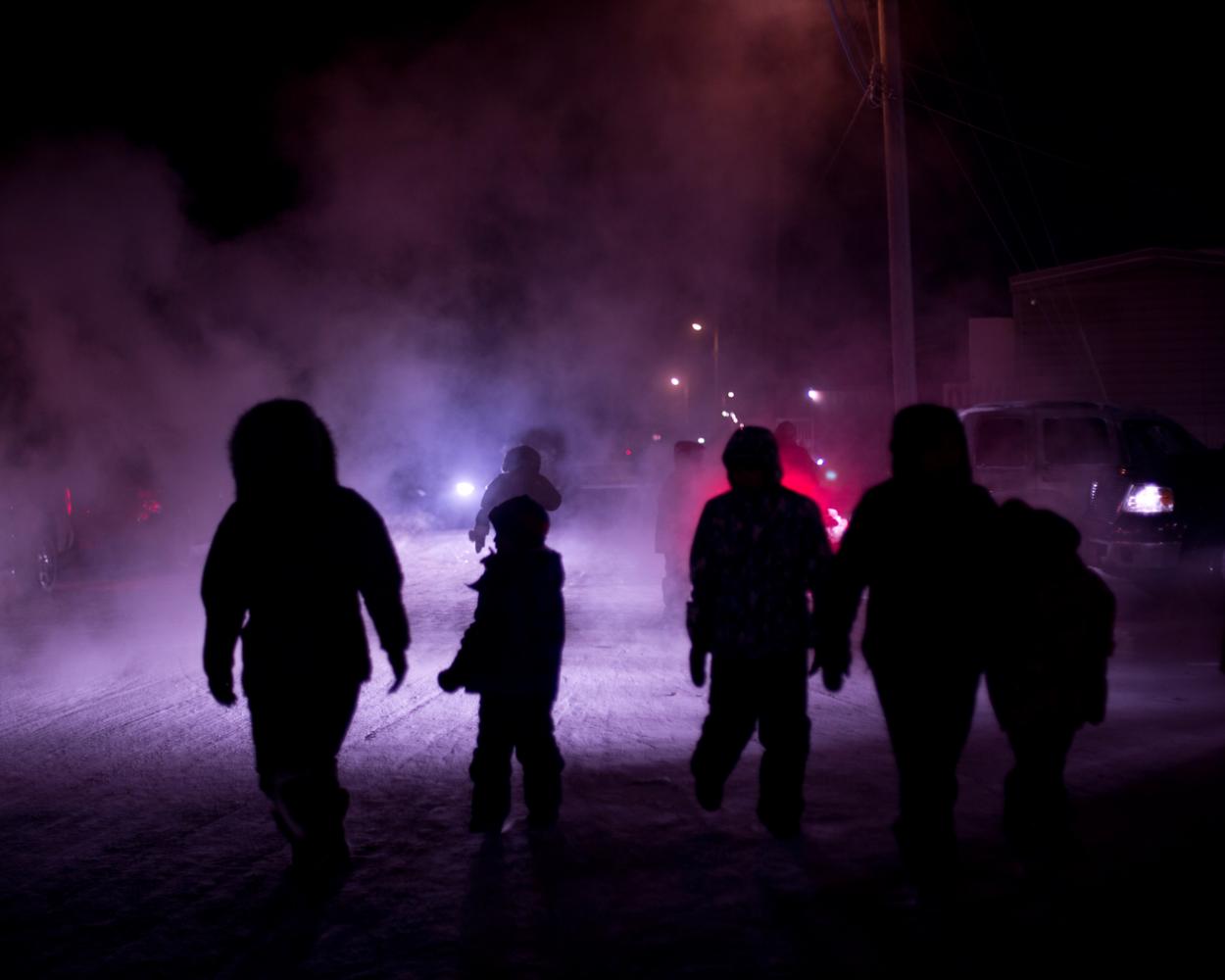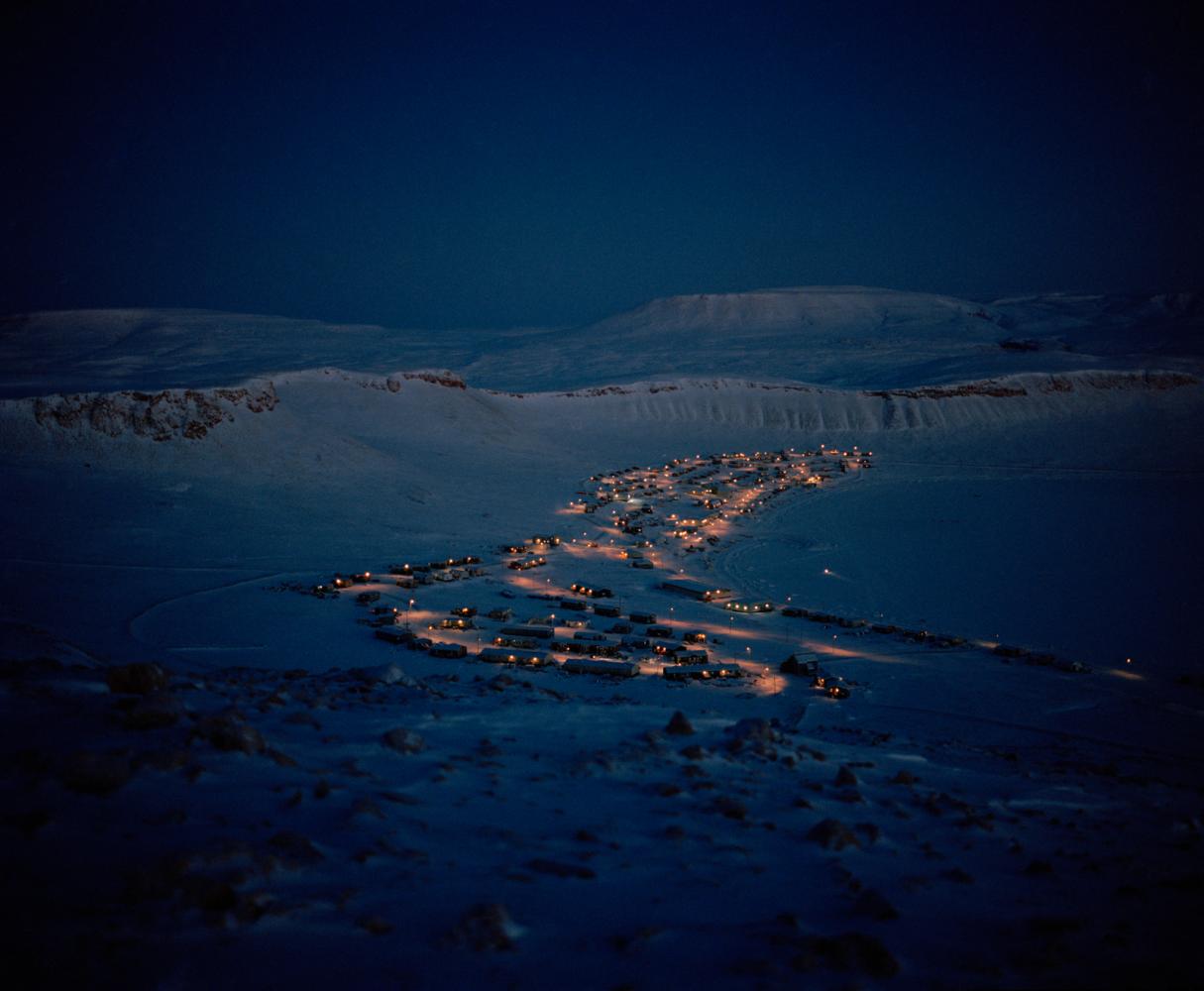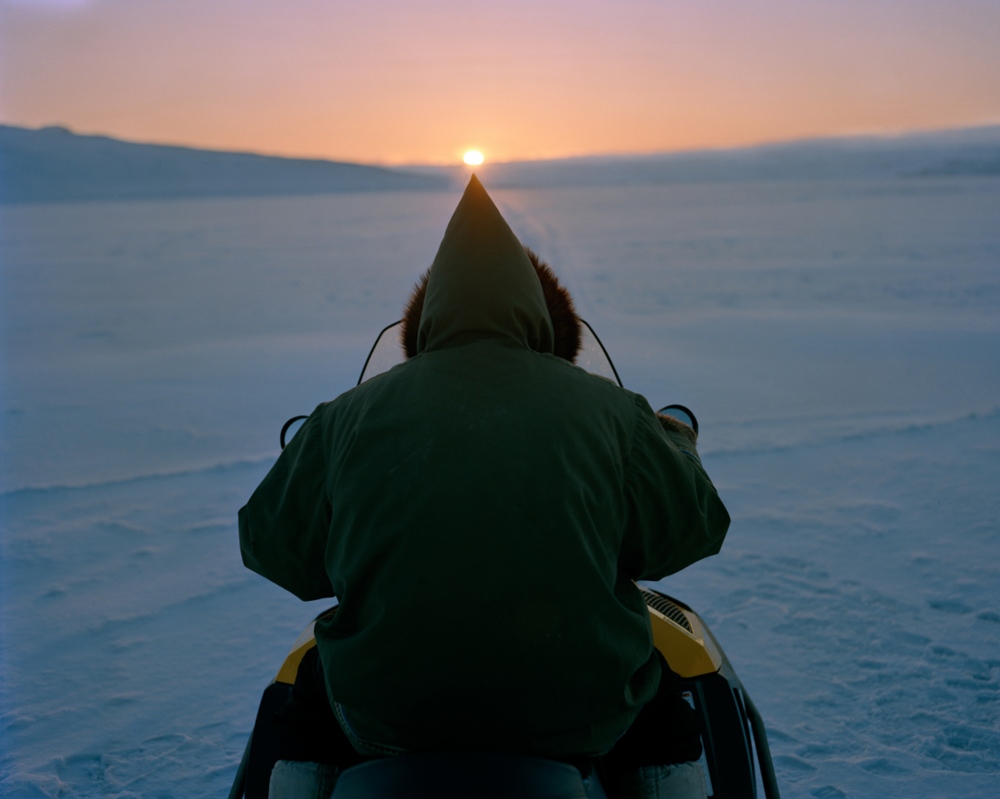Winter in the Arctic: vibrant, pulsing. The throb of club music pours from the community hall, streets alive with the roar of skidoos and the cries of dog teams. Faces illuminated by the eerie glow of iPad screens in this polar night, the ding of text messages, the glow of the moon, the buzz of televisions and sewing machines and the silent stillness of hunters waiting, waiting. Feasts of walrus, seal and Coca-Cola; everyone talking about the land, returning to the land. Dancing, praying, hunting, sewing, playing games, telling stories, passing time. Waiting for spring, for the return of life - yet everything continues, even in darkness.
The north of Baffin Island, in the Canadian territory of Nunavut, is one of the coldest inhabited regions on earth. For nearly 5,000 years, the Inuit have lived a nomadic lifestyle in this landscape, subsisting off of the land and the sea until the 1950s. Communities today navigate shifts between the lifestyles and values of elders raised in a traditional hunting society, and the young generations growing up in the wake of colonization, with social media and access to the Internet.
Photographed over four months in the community of Ikpiarjuk (Arctic Bay), Nunavut in 2014-15, Under the Same Stars celebrates the vibrancy of community life and the Arctic winter landscape during the darkest time of the year.
This project was funded in part by a grant from Fulbright Canada, the Fulbright Canada-RBC Eco-Leadership Program, and the 83 backers of a Kickstarter campaign in summer 2014.
My deepest gratitude goes out to the people of Arctic Bay for welcoming me with such warmth and openness into their lives, and for making this project possible. Special thanks to Sheba Ejangiaq, Joseph Kigutaq, Clare Kines, the Tatatoapik family, Darcy & Susan Enoogoo, and countless others. In fond memory of Peugatuk Ettuk.


















